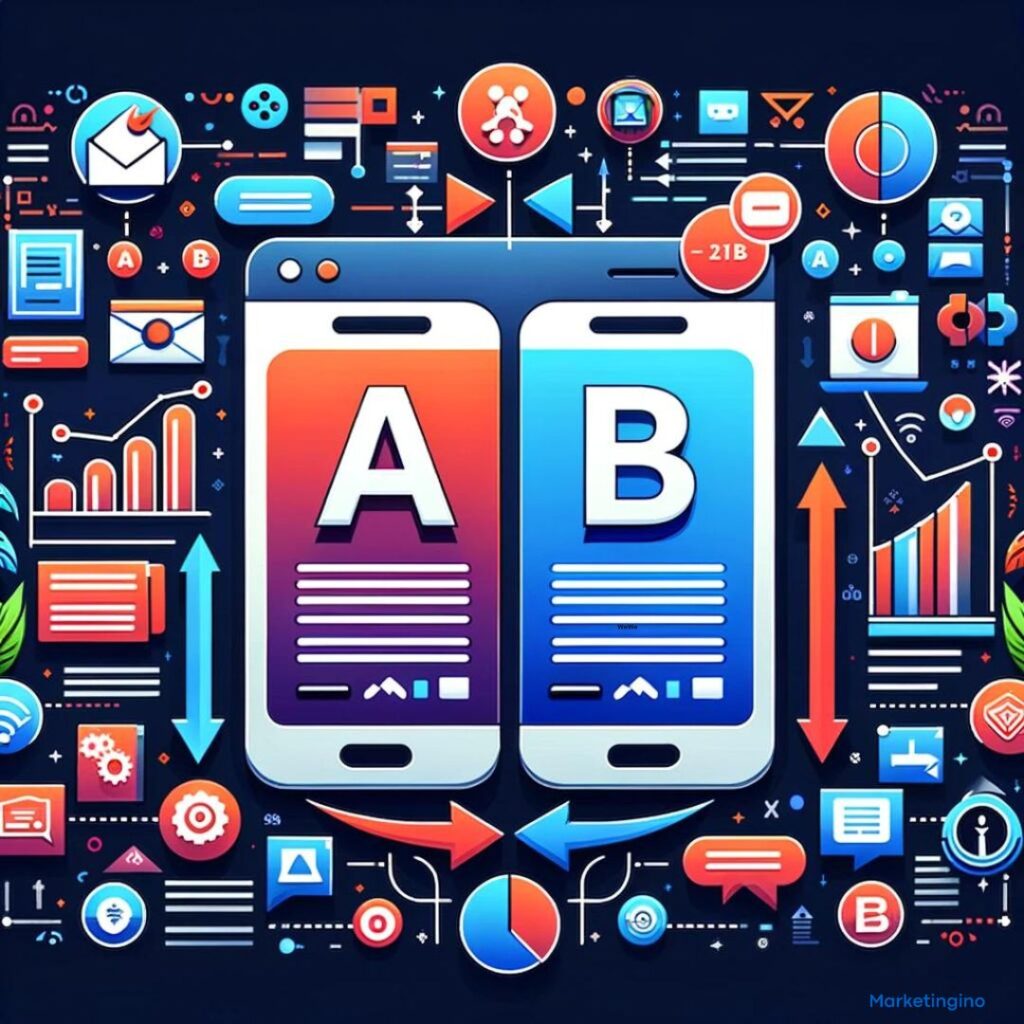In the digital marketing landscape, making informed decisions is crucial for success. One of the most effective methods for optimizing marketing strategies and improving user experiences is A/B testing. Also known as split testing, A/B testing involves comparing two versions of a webpage, email, ad, or other marketing assets to determine which one performs better. By leveraging data-driven insights, businesses can refine their approaches, enhance engagement, and boost conversions.
What is A/B Testing?
A/B testing is a randomized experiment where two versions (A and B) of a single variable are shown to different segments of your audience simultaneously. The goal is to identify which version yields better results based on a specific metric, such as click-through rates, conversion rates, or engagement levels. This method helps marketers understand what resonates most with their audience and make data-backed decisions to optimize their campaigns.
The Importance of A/B Testing
- Data-Driven Decisions: A/B testing provides empirical data on what works best, reducing guesswork and intuition-based decisions. This leads to more effective marketing strategies.
- Improved User Experience: By testing different variations, you can identify what your audience prefers, leading to an improved user experience and higher satisfaction.
- Increased Conversions: Optimizing elements such as headlines, images, and call-to-actions can significantly boost conversion rates, leading to higher ROI on marketing efforts.
- Reduced Risk: A/B testing allows you to experiment with changes on a small scale before fully implementing them, minimizing the risk of negatively impacting your overall performance.
Steps to Conduct A/B Testing
- Identify the Goal: Define what you want to achieve with the test. This could be increasing email open rates, improving landing page conversions, or boosting ad engagement.
- Choose the Variable to Test: Select a single element to test, such as the headline, image, button color, or layout. Testing one variable at a time ensures clarity in the results.
- Create Variations: Develop two versions of the asset you want to test. Version A is the control (current version), and Version B includes the change you want to test.
- Split Your Audience: Randomly divide your audience into two groups. Ensure that each group is statistically similar to avoid biased results.
- Run the Test: Launch both versions simultaneously and collect data over a specified period. Ensure the test runs long enough to gather sufficient data for reliable results.
- Analyze Results: Compare the performance of both versions based on the predefined metric. Use statistical analysis to determine if the difference in performance is significant.
- Implement Changes: If Version B outperforms Version A, implement the changes across your campaign. Continue testing other variables to further optimize your strategy.
Common Elements to A/B Test
- Headlines: Test different headlines to see which one captures the most attention and drives higher engagement.
- Call-to-Action (CTA): Experiment with various CTA phrases, button colors, and placements to find the most compelling combination.
- Images and Videos: Test different visuals to determine which ones resonate best with your audience and enhance your message.
- Email Subject Lines: Optimize email open rates by testing various subject lines for clarity, urgency, and appeal.
- Landing Pages: Test different layouts, content, and form fields on your landing pages to increase conversions.
Examples of Successful A/B Testing
- Airbnb: By A/B testing their homepage design, Airbnb discovered that a simpler, more visually appealing layout led to higher user engagement and bookings.
- Spotify: Spotify tested various call-to-action buttons for their premium subscription offers. The winning variation resulted in a significant increase in conversions.
- Obama Campaign: During the 2008 presidential campaign, Obama’s team used A/B testing on their donation pages, leading to a 49% increase in donations.
A/B testing is a powerful tool that enables marketers to make informed, data-driven decisions. By systematically testing and optimizing different elements of your marketing strategy, you can enhance user experience, boost conversions, and achieve better results. As the digital landscape continues to evolve, incorporating A/B testing into your marketing practices will ensure you stay ahead of the curve and maximize the effectiveness of your campaigns.




